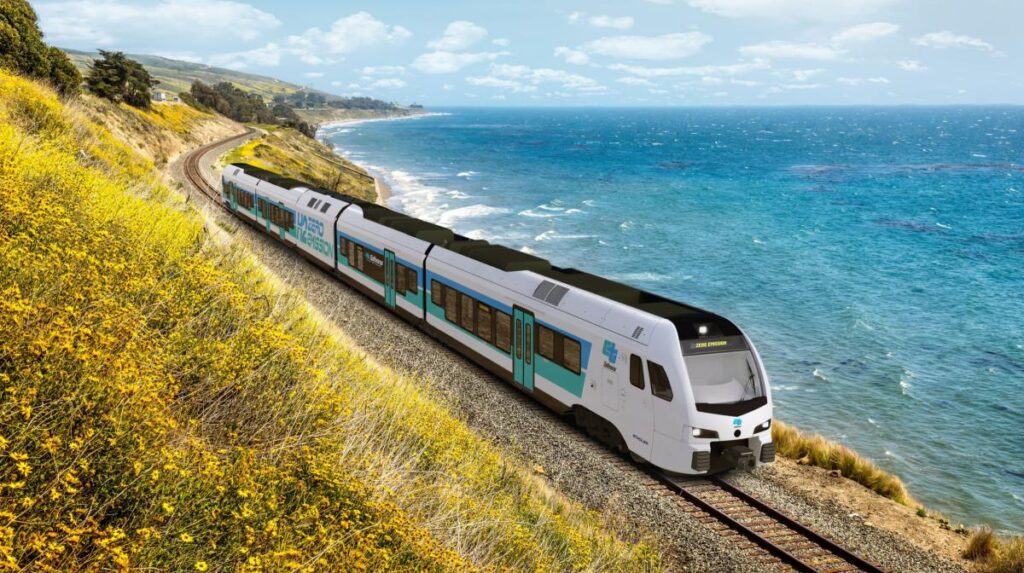(Caltrans photo)
Caltrans recently signed a historic, $80 million contract with Stadler Rail Inc. to deliver the first zero-emission, hydrogen intercity passenger trains in North America, furthering California’s standing as a world leader in clean transportation.
The vehicles will be based on Stadler’s successful Fast Light Intercity and Regional Train (FLIRT) concept, extending work done with the San Bernardino County Transportation Authority to develop self-powered multiple-unit trains using zero-emission hydrogen fuel cells without the need of a separate locomotive. The purchase is funded through Gov. Gavin Newsom’s historic $10 billion, multiyear zero-emission vehicle package, which included $407 million for the California State Transportation Agency (CalSTA) to demonstrate and purchase or lease clean bus and rail equipment and infrastructure.
“California is once again leading the country in delivering innovative clean transportation options that benefit people and the planet,” said Toks Omishakin, California transportation secretary. “These state-of-the-art hydrogen train sets will demonstrate the capability of an emerging technology and will complement our future electrified high-speed rail line for an expanded clean rail network.”
“California is using our transportation dollars to fund innovation solutions like these zero-emission, hydrogen passenger trains to significantly reduce planet-warming pollution and combat and adapt to climate change ― while providing travelers an alternative to driving,” said Tony Tavares, Caltrans director.
“It is great to be part of California’s move toward eco-friendly travel with another zero-emission project in the state and we look forward to continuing our work with the California State Transportation Agency and Caltrans to make this a reality,” said Martin Ritter, CEO of Stadler US.
The contract includes a base order of $80 million for the first four trainsets with options for up to 25 additional trainsets that can be used throughout California.
The announcement builds on more than $1 billion in zero-emission transportation investments in the past few months alone.
Read the full article here











